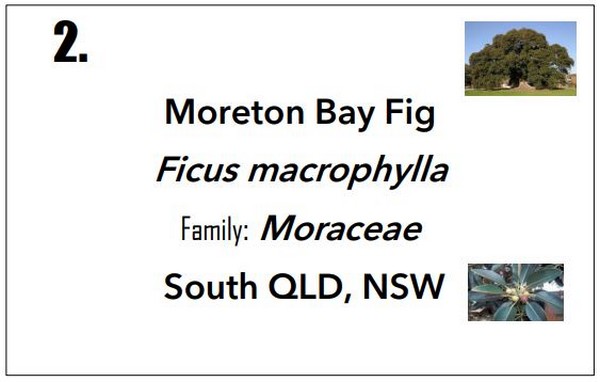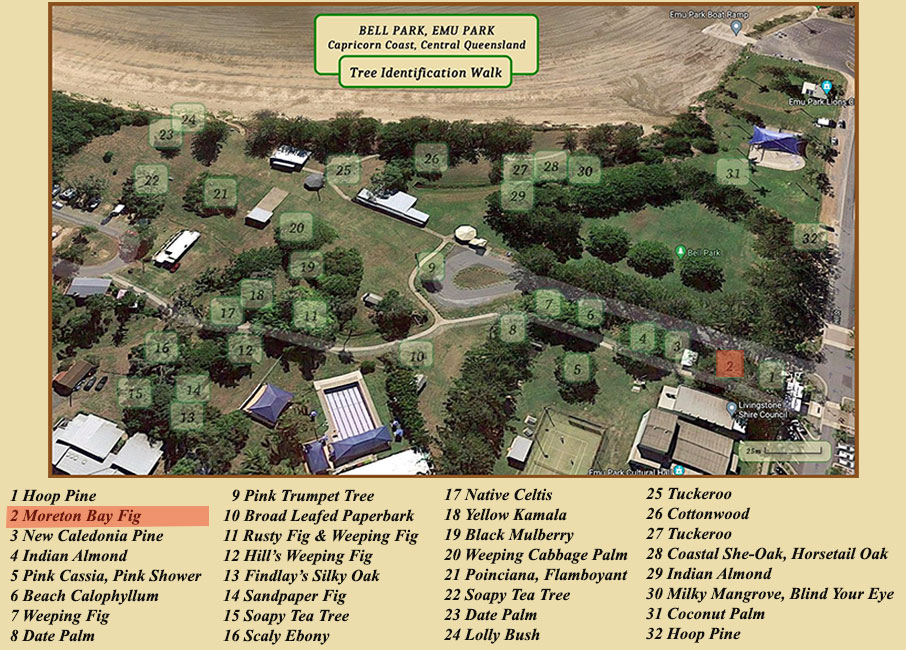

Scroll down to view the photo gallery for this tree
TREE NUMBER 2.
MORETON BAY FIG
(Ficus macrophylla)
This large mature specimen is typical of its species’ spreading form, where the tree’s canopy can be as wide as its height. It grows to about 40 metres with a flanged and broadly buttressed trunk. The leathery leaves are dark glossy green above and rusty below with conspicuous yellow-green veins. The abundant fleshy fruit turns orange or purple and is edible when fully ripe. The fallen figs can be somewhat messy underfoot.
The Moreton Bay Fig occurs naturally in coastal sub-tropical rain forests of eastern Australia and often begins life growing on the trunk of another tree which is eventually enmeshed in aerial roots and killed. (Look for examples of this growth as you continue this walk.) This species was often retained as a feature on farmland or for shade when rainforest areas were cleared for cropping and dairy farms. It has been widely planted in large open parks and gardens.
The fruit is eaten by lorikeets, fig birds and the pied currawong.
View Slideshow Gallery (more photos will be added)

